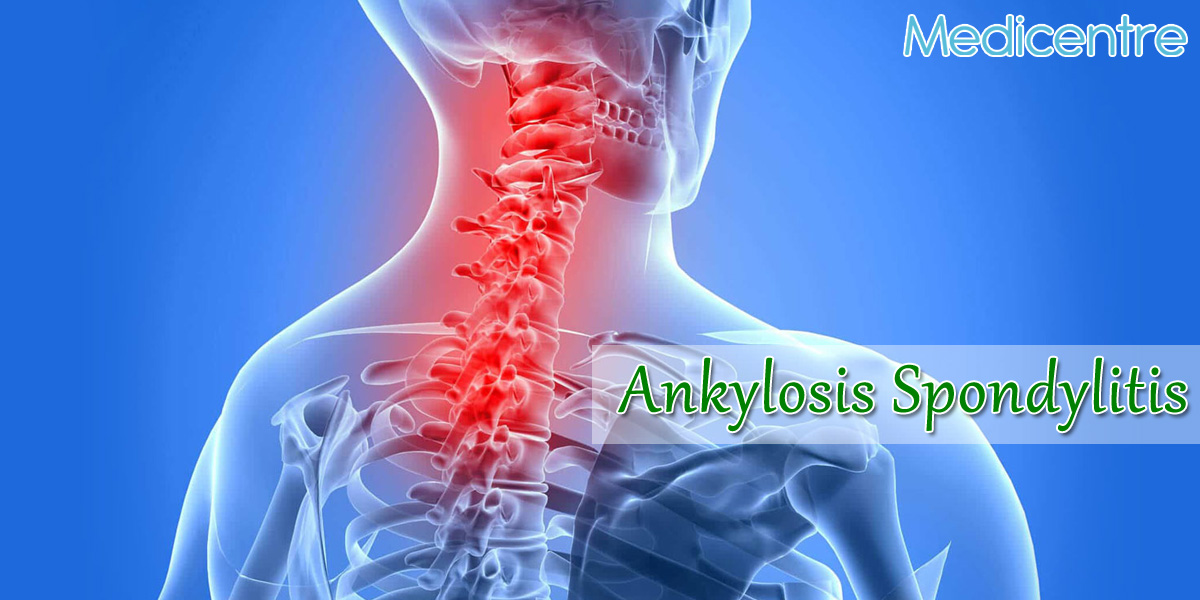Ankylosis Spondylitis
It is a chronic inflammatory connective tissue disease that affects the axial skeleton and central joints including the TMJ. It is also called as Marie strumpell disease and rheumatic spondylitis. The disease is more common in men and often run in families. It is mostly diagnosed in late adolescence or early adulthood. Over time, it fuses vertebrae together by limiting movement.

CAUSES:
The cause is usually unknown and it occurs due to a combination of genetic and environmental factors. It is believed to be due to this specific antigen known as HLA-B27. Tumor necrosis factor -alpha and IL-1 is also implicated in this disease.
RISK FACTORS:
- Old age
- Psoriasis arthritis
- Inflammatory bowel disease
- Reiter’s syndrome
- Genetics
- Familial/hereditary
SYMPTOMS:
- Back pain that comes and goes.
- Chronic dull pain in the lower back region.
- The stiffness of the lower back.
- Pain referred to the other buttocks/back of the thighs.
- Fever, fatigue, weight loss.
- The stiffness of joint that is relieved by heat and exercise.
- Lasting pain that worse in the morning and gets relieved by evening for consecutive three or more months.
DIAGNOSIS:
- Physical examination will be done by the doctor and will ask you about the symptoms, past medical history of a family.
- MRI
- CT-SCAN
- BLOOD TEST
TREATMENT:
- ANTI-INFLAMMATORY MEDICATIONS: such as NSAIDS like ibuprofen, diclofenac, indomethacin, COX-2 inhibitors as per prescription to relieve pain and inflammation
- TUMOR NECROSIS FACTOR BLOCKER: are biologics that suppress the inflammatory response and slows the progression of ankylosis spondylitis.
- REGULAR EXERCISE -stretching and range of motion exercises improve the motion of the joints.
- SURGERY: in severe cases in the form of joint replacements, in the knees and hips.
- THERAPEUTIC EXERCISES: includes aerobic exercises, TENS, thermotherapy, group exercises are all proven to be effective.